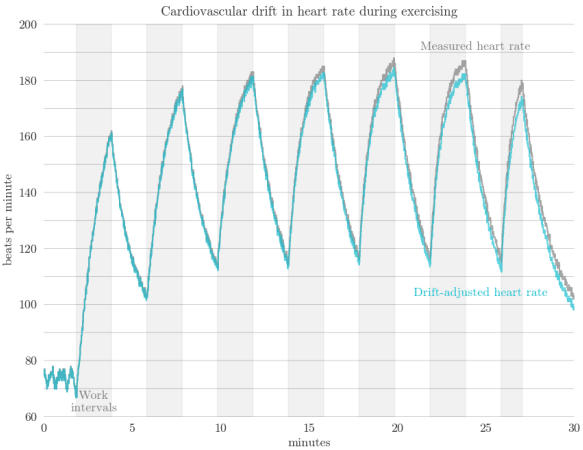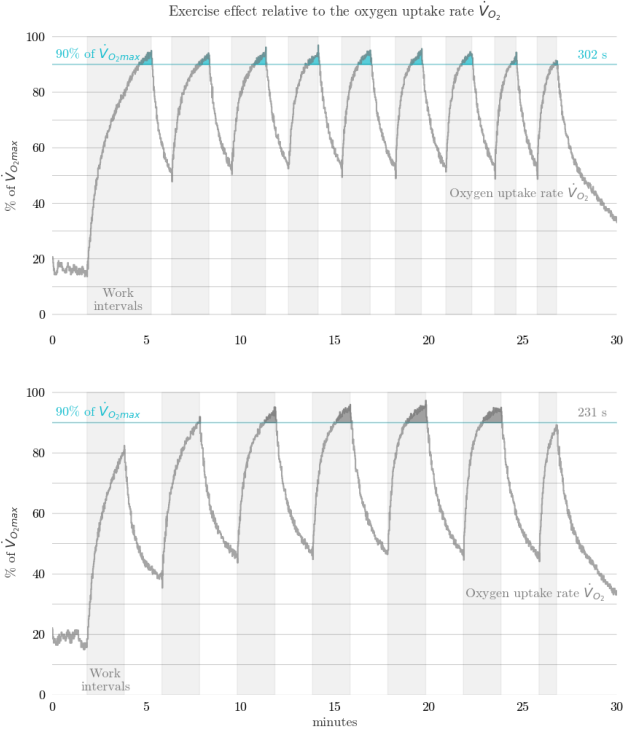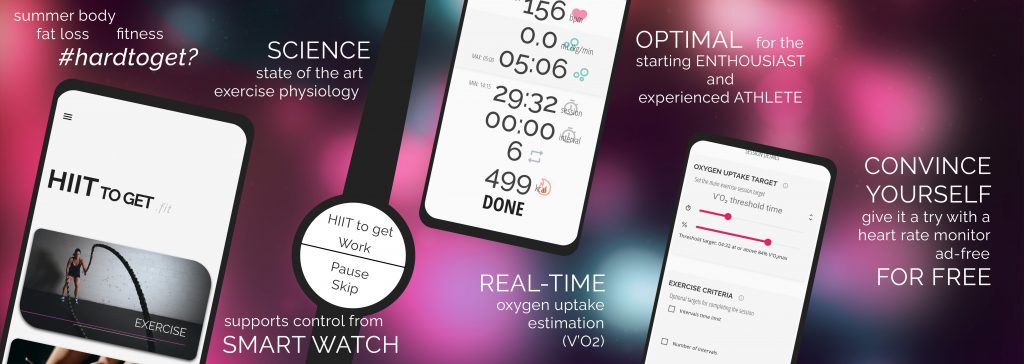Why It Works
We realize that there is a large offering of exercising apps, fitness coaches, and activity trackers that can be readily downloaded and that help you in realizing your fitness goals. Some of these apps are still useful next to HIIT to get.fit. Learn more in a quite detailed description below. For a simple list of features, go to Features.
Ways of exercising
Any exercise is better than no exercise at all, that’s very clear. People will often start with exercising according to a fixed time duration: half an hour running or an hour swimming for example. Without considering the intensity this doesn’t say anything about training stimulus that is achieved, and therefore the effects that can be expected after the exercise. Moreover, time-based sessions tend to over-generalize people: they assume that what works for one person will also work for another. That is of course not true, because every person is a unique individual with specific bodily responses to exercising.
Apps that tell you in which heart rate zone to exercise are an adequate improvement over time-based exercising, because your real and actual effort is measured according to the variation in your heart rate. You can then target specific heart rate zones (an amount of time in a certain heart rate zone) that are adjusted to you based on your age. You will need a heart rate monitor, but the benefits of exercising like this if you value your health and fitness are worth the cost.
Why then yet another app that does something with your heart rate?
There are several reasons why HIIT to get is a huge improvement over “simple” heart rate-based exercising.
Firstly, the heart rate zone-targeting apps assume that your heart rate directly relates to an exerted effort, which is not true. Your body experiences an effect called cardiovascular drift, which is a gradual increase in heart rate during exercising without an accompanying increase in exerted effort. This is related to the environment temperature, your hydration status, the stroke volume of the heart, etc. It means that the longer your exercise takes, the more pronounced this effect will get. Heart rate measurements will be increasingly overestimating the actual exercising effort if cardiovascular drift is not compensated.

Secondly, this app is mainly focused on interval training sessions. Interval training has been proved to be more effective and more efficient in gaining exercising results when compared to continuous effort exercising. Much less time is needed when performing intervals compared to continuous effort to get the same results. The general conception has been, and sadly still is, that one burns fat in a heart rate zone just below the aerobic threshold. However, the science on this is clear: interval training is more effective in accomplishing this goal.
Thirdly, the single most important marker for your fitness is your maximal oxygen uptake (the V’O2max). The higher this number, the better your general fitness, and the longer you can endure exercise at a certain intensity. Although various apps do estimate this number based, for example, on the speed with which you have run during a few sessions, they never use it to give you feedback during a session. HIIT to get is the first app that estimates your real-time actual oxygen uptake level during your exercise based on heart rate measurements. It uses this in guiding you through your interval session by finding the optimal moments to increase or decrease the intensity (going to a work or relief interval, respectively). This is not simply a direct relationship with the heart rate, because the oxygen uptake reacts much quicker to intensity variations than the heart rate does. Therefore, state-of-the-art sophisticated mathematical models are implemented to capture this response.

Okay, but what does all of this mean?
That you exercise a lot smarter, more efficient, and more effective when adopting interval trainings that are guided by HIIT to get.fit. The exercise session is made for you specifically, and monitors you during the session to measure the true progress. It is an individualized training program, much like having a personal coach that reads the response of your body on a screen and makes split-second decisions based on that. Simply try it to convince yourself, by downloading for free.
